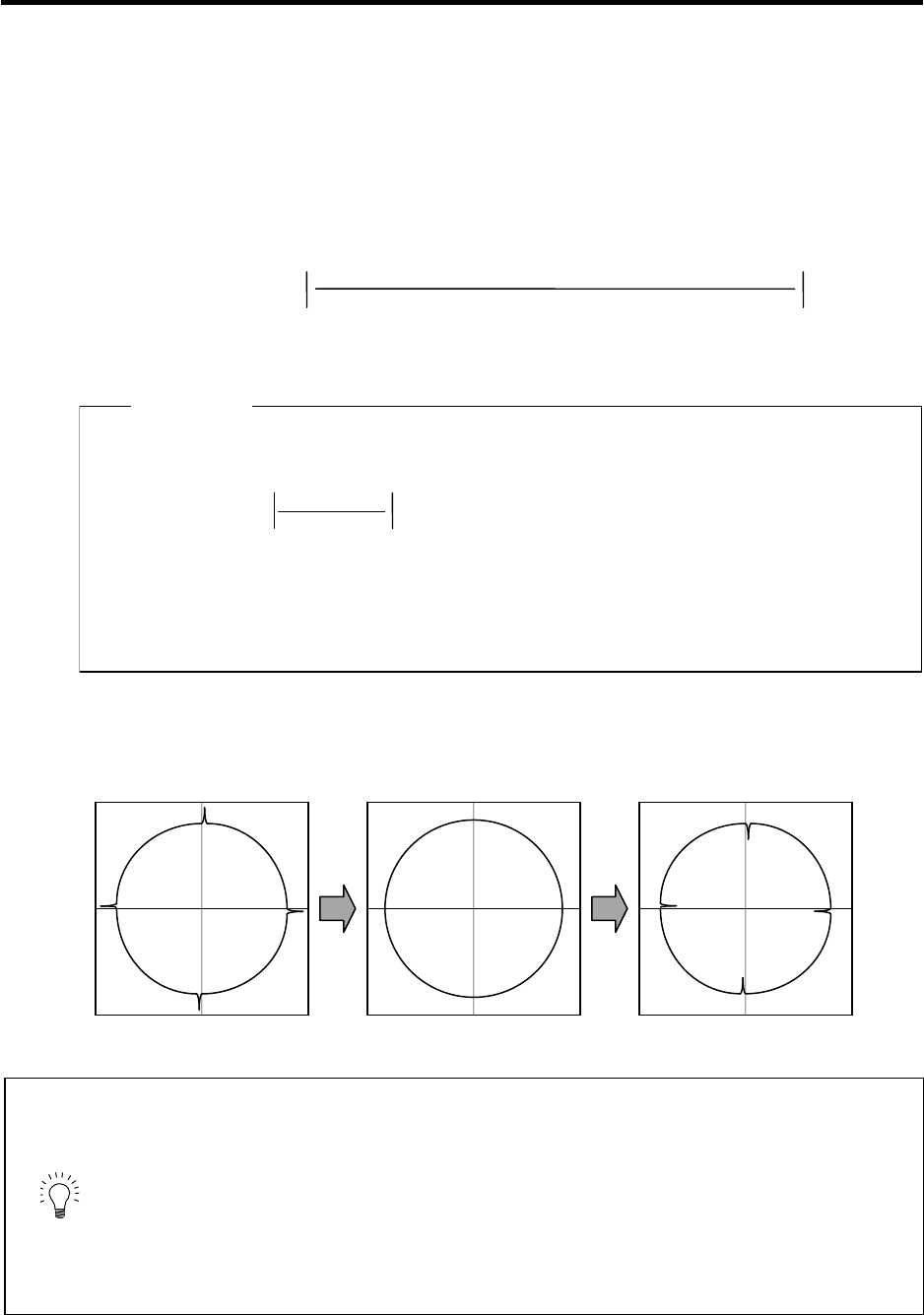
9. Adjustment
9 - 20
<Adjustment method>
First confirm whether the axis to be compensated is an unbalance axis (vertical axis, slant axis). If it
is an unbalance axis, carry out the adjustment after performing step "(2) Unbalance torque
compensation".
Next, measure the frictional torque. Carry out reciprocation operation (approx. F1000) with the axis
to be compensated and measure the load current % when fed at a constant speed on the NC servo
monitor screen. The frictional torque of the machine at this time is expressed with the following
expression.
Frictional torque (%) =
(+ feed load current %) - (- feed load current %)
2
The standard setting value for the lost motion compensation 1 (LMC1) is double the frictional torque
above.
Assume that the load current % was 25% in the + direction and -15% in the - direction
when JOG feed was carried out at approx. F1000.
25 - (-15)
2
= 20%
The frictional torque is as shown above, so 20% × 2 = 40% (LMC2 remains at zero, and
compensation is carried out in both directions.) is set for LMC1. (LMC2 is left set at 0.)
With this setting, 40% compensation will be carried out when the command reverses from
the + direction to the - direction, and when the command reverses from the - direction to
the + direction.
(Example)
Perform the final adjustment, carrying out the CNC sampling measurement (DBB measurement) or
actual cutting. If the compensation amount is insufficient, increase LMC1 or LMC2 by 5% at a time.
Note that if the setting is too high, biting may occur.
Compensation 0 Optimum Too high
POINT
1. When either parameter SV016 (LMC1) or SV041 (LMC2) is set to 0, the same
amount of compensation is carried out in both the positive and negative direction
with the setting value of the other parameter (the parameter not set to 0).
2. To compensate in only one direction, set -1 in the parameter (LMC1 or LMC2)
for the direction in which compensation is prohibited.
3. The value set based on the friction torque is the standard value for LMC
compensation. The optimum compensation value changes with the cutting
conditions (cutting speed, cutting radius, blade type, workpiece material,
etc.). Be sure to ultimately make test cuts matching the target cutting and
determine the compensation amount.
